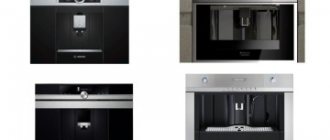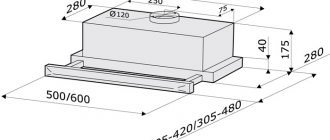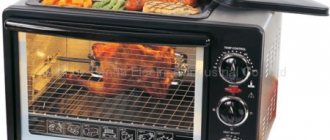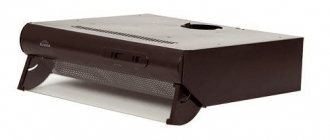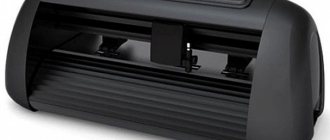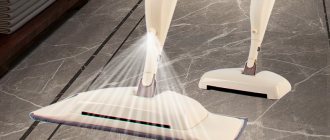About the importance of the material
Cauldrons are made from cast iron, copper, steel and aluminum. Steel and copper are less popular, as they require complex maintenance and there is a risk of rust formation or toxic metal compounds getting into food.
Cast iron has undeniable advantages, which makes it the most popular material for such products:
- Very high strength (if used correctly) and durability. Over the years, the value of the cauldron only increases.
- Food stays hot longer. In a large cauldron it will cool for several hours.
- Heating occurs quickly and evenly.
- Food doesn't burn.
- The strong lid does not release steam, which contributes to better heating of food.
Benefits come at a price. The disadvantages of cast iron include:
- Fragility. If struck strongly by a hard object, the product may break.
- Heavy weight, which makes a cast iron product not the best choice for tourists.
- Unassuming appearance. Although this is a matter of taste: some may like the primitive roughness of cast iron cookware.
Expert opinion
Levin Dmitry Konstantinovich
I myself have two cauldrons: cast iron and aluminum. Because of its advantages, I use the cast iron one on a regular basis, and I take the small aluminum one on hikes so as not to carry extra pounds.
Cauldron shape
Which cauldron is better, cast iron or aluminum? This is the main question, but other criteria are also important. For example, the shape of the dishes. Its choice depends on the cooking process. The standard or classic shape is hemispherical. But such a cauldron is better used for cooking over a fire or special stands.
In such dishes, food does not get stuck in the corners and is easy to mix. But for a gas stove this shape is inconvenient. In this case, it is better to choose a cauldron with a flat bottom. It's convenient and practical. It will have a rounded shape inside, so the cooking process will be no less enjoyable. Which cauldron to choose - aluminum or cast iron - depends on personal preferences and skills.
Determining the right size
The first thing you need to decide is how many people you will most often need to cook food for. A simple table will help you make your choice.
| Number of persons | Cauldron volume, liters |
| 2-3 | 3-7 l |
| 3-6 | 8-15 l |
| 7-10 | 15-20 l |
| 10-15 | 20-25 l |
| 15+ | 25+ l |
To avoid memorizing numbers, remember a simple rule. Double the expected number of guests and add two more to the result. You will need approximately this volume in liters. You cannot fill the cauldron with food right up to the lid, as this will prevent it from being mixed and will create a risk of the entire structure tipping over.
Video - How to choose a cauldron?
A cauldron is a universal utensil that is used by housewives and cooks around the world to prepare traditional oriental dishes or food from meat, cereals or vegetables. A good cauldron does not necessarily have to be expensive: our rating includes fairly budget models with good characteristics and excellent customer reviews. After studying it and taking note of the tips on choosing a good boiler, you will definitely choose for yourself the model that best meets your requirements and needs.
Wall thickness
The thicker the walls, the better. This directly affects how long the food will remain hot after cooking, as well as the reliability of the product. The thickness should be at least 4 mm, ideally 5 mm or more. There are Chinese crafts on the market with walls only 3 mm thick. The sellers are proud of this and assure that this is how it should be. Don't buy it.
Expert opinion
Levin Dmitry Konstantinovich
A real Central Asian cauldron is always thick-walled, and this is not due to imperfect production, but to centuries of experience. Of course, the product will be heavy, and that's normal.
Form
Traditionally, cauldrons were made by casting and given a hemispherical shape. It is ideal for those who prefer cooking over a fire. Every tourist will confirm that campfire food is much tastier than food cooked on a kitchen stove. In addition, in a cauldron of this shape, food is heated even more evenly, since the flame perfectly heats both the bottom and the sides. Typically, products with a rounded bottom are hung over the fire on comfortable tripods.
The round bottom will interfere with the use of the cauldron at home. If you are not going to regularly travel outside the city, but cook mainly in the oven or on the stove, choose a flat-bottomed model.
The best camp cauldrons
Lightweight models of not very large sizes are suitable for hiking. It is preferable to choose a container with a round bottom. Food does not get stuck in it or burn in the corners.
Camping cauldron Biol "Tourism" with lid, 7 l
Rating: 4.9
The budget version from Biol, measuring 7 liters, was recognized as the best camping cauldron. It is made of die-cast aluminum and has a lid, solid sides and short handles. It serves culinary masterpieces from rice, vegetables, lamb, pilaf and other Asian dishes. It is acceptable to use at home.
Cookware cannot be placed on an induction hob. Wall thickness – 4 mm, base – 10 mm. The vessel weighs 1600 g and costs 1200 rubles. Buyers say that the vat has never let them down in nature. Food on a fire does not smell of burning, the vessel itself is light and convenient.
Advantages
- optimal price;
- impressive bottom thickness;
- versatility;
- ease of use;
- a light weight.
Flaws
- no serious disadvantages
Camping cauldron “Kukmara” with frying pan lid, 5
Rating: 4.8
The next aluminum pot has a smaller volume, but is well suited for a company of 5-7 people. It is distinguished by decently thick walls and removable steel loops for attaching wire. The base of the cookware is flat. The cauldron is stable on the stove or fire grate. The closing part of the product is molded and comfortable. The cookware has no sharp edges.
There is no special coating either inside or outside. The cauldron is made simply and efficiently. Its walls are not scratched when stirring food with a metal spatula. The model is easy to wash and carry with you on a hike. Package weight – 1870 rubles. The price is just over 1 thousand rubles.
Advantages
- practicality;
- ease of use;
- versatility;
- high-quality manufacturing;
- reasonable cost.
Flaws
- lack of non-stick coating.
Camping cauldron with lid Alita, 15700, gray, 5 l
Rating: 4.7
The rating is completed by the domestic one, which has been pleasing customers with high-quality non-stick cookware for several years. The 5-liter Alita camping pot is distinguished by thicker walls, a lid and handles. The container is perfect for cooking over low heat. The vessel and lid are made of aluminum.
The owners of the vat say that food does not stick to the walls of the dish, and the food in it turns out incredibly tasty. If desired, you can use the boiler at home on a gas or electric stove. Owners of the model are not entirely happy that the handle on the lid is made of plastic. Bottom density – 4.22 mm. Product weight – 2 kg. Price – about 1200 rubles.
Advantages
- convenient lid;
- ease of cleaning;
- optimal weight.
Flaws
- not too thick bottom;
- plastic handle on the lid.
Reliable manufacturers
Cast iron cauldrons are available in the range of most kitchen utensil manufacturers. When choosing a product, the brand name does not play a special role; the material, wall thickness and shape of the cauldron are much more important.
However, it is useful to know some things:
- Kazan is the national dishware of Tajikistan, Uzbekistan and other countries of Central Asia. It has been used there for a very long time, and it is these manufacturers who often offer the best models.
- The Russian market contains a mixture of both real goods from Central Asia and handicrafts made in China.
- You should be very careful when handling Chinese cauldrons. They are often thin-walled and made of low-quality metal. Such dishes will not last long; the taste of food cooked in it will not be rich. In the worst case, due to the poor quality of the material, you can completely ruin the dish and your stomach.
Inspect the product from all sides before purchasing. Chips, cracks and dents are not acceptable. If you want to play it safe, buy a cast iron cauldron with an enamel coating. This will help protect it from chipping.
Here is a small list of trustworthy manufacturers:
- Kama dishes.
- Tundra Grill.
- Forester.
- Kukmara.
- Mayer&Boch.
Operating principle and device
Kazan is traditionally used in Asian cuisine. It is round in shape so that the flame in the hearth evenly heats not only the bottom, but also the walls of the dish. The contents of the cauldron cook faster and stay hot longer, and the aroma of the spices is better absorbed due to the long simmering period of the food.
For modern gas and electric stoves, the same cooking principle applies:
- For stability, the cauldron is placed on a special stand in the form of a tripod;
- heat is evenly distributed both along the bottom of the dish and along its walls;
- increased steam formation occurs, which ensures simmering of the food rather than frying.
When cooking food, the water first receives heat, then it transfers evenly from all sides to the food. If frying occurs, the same principle applies, only the temperature should be lower. It is more convenient to mix food in a cauldron.
A prerequisite for cooking is the presence of a tightly closing lid. It prevents steam from escaping from the cookware. The lid is included and is made of the same material as the cauldron.
Important! There are options with standard 2 handles, like a saucepan. Sometimes cauldrons are equipped with a third, which serves to suspend the container over the fire. This model is convenient for cooking outdoors.
What is the difference between a cauldron and a saucepan?
What does a cauldron look like as opposed to a saucepan:
- It has a semicircular or spherical bottom, the pan is flat.
- The walls and bottom of the cauldron are thicker.
- It's much heavier.
- Capacity depends on the model, but choose a cauldron of at least 5 liters.
- Food stays warm longer in it.
The cauldron usually has the color of the material. The pan looks more attractive: it can be of different colors and decorated with different designs.
Reference. Food in a cauldron burns less than in a saucepan.
Wall thickness and bottom shape
The standard thickness of the bottom and walls of the boiler is 0.3-0.5 cm. It ensures uniform heating, heat accumulation and distribution, as well as preservation.
The inside of the walls should be smooth. If there is a special coating, it spreads evenly, covering the bottom and walls.
Types of cauldrons depending on the shape of the bottom:
- rounded - the dishes are unstable, and a special stand is required for home use;
- flat - stands firmly on the hob;
- round or oval - maintains a stable position during cooking.
Any shape of the cauldron bottom is suitable for home use, ensuring proper cooking on an electric or gas stove.
Care Tips
Don't let the cauldron's rough appearance fool you. This bulky product, like any utensil, requires good care. With proper maintenance, it will last for decades and the taste of your food will only improve. The fact is that over time, during cooking, fat particles penetrate into the granular walls, and even after washing, a thin layer of fat remains in the cauldron. It serves as a natural non-stick coating.
Preparing for first use
You cannot immediately make pilaf in a new cauldron. It is necessary to clean it of grease and dirt that inevitably remain inside during manufacturing. Multi-stage cleaning:
Stage one: primary calcination
- Wipe the inside of the product with a paper towel or napkin.
- Rinse thoroughly with running water and wipe again.
- Place the cauldron on the fire.
- Heat for 1-1.5 hours until there are no dark spots left on the bottom. The heated product will begin to smoke - this is the evaporation of the machine oil that was used in the production process.
- Allow the product to cool for 30-40 minutes until the temperature is approximately 70 degrees.
- After this time, rinse it again with water and wipe it to remove soot deposits.
Expert opinion
Levin Dmitry Konstantinovich
Never cool the cauldron with ice or cold water, otherwise it will burst.
Before the first use, the cauldron must be heated!
Stage two: calcination with salt
- Put your purchase on the fire again and heat it up.
- Pour coarse table salt inside at the rate of 1-1.5 kg of salt per cauldron with a capacity of 5-8 liters.
- Heat the cauldron for an hour, spreading salt along the walls. Soon it will turn beige.
- Finally, throw away the salt; it can no longer be eaten.
- Let the product cool, then wipe with a paper towel.
Stage three: treatment with vegetable oil
- Pour one and a half glasses of refined oil into a volume of 5-8 liters.
- Heat the cauldron until the oil becomes hot, but does not begin to smoke. Excessive heat is not needed as it may catch fire. Remember: if the oil catches fire, it is strictly prohibited to extinguish it with water!
- Distribute the oil evenly over the bottom and walls. This is easy to do with a heat-resistant brush; you can simply rock the cauldron. The process takes approximately 11 minutes.
- After cooling, drain the oil and wipe the product with a napkin.
Such a complex procedure is guaranteed to remove residual machine oil and harmful impurities, and refined oil forms the primary non-stick layer.
Do you cook food in a cauldron?
Constantly! Rarely, but it happens
Washing a cast iron cauldron
After cooking, a lot of fat will remain in the cauldron, and you will probably want to wash it using Fairy or other detergents.
But there are some subtleties here:
- Any detergents are absorbed into the fatty non-stick layer of the cauldron without completely removing it. As a result, the taste of the food may deteriorate slightly.
- If the food is burnt, you can use a steel wool or a stiff brush. This will damage the non-stick layer, but will not affect the taste of the food.
- The best option is to simply wipe the product with a wet soft sponge to remove excess grease and pieces of food.
If you did use detergents during washing, then reheat the cauldron to completely remove the chemicals.
There is an alternative method of washing, but it is not for the lazy:
- Pour water into a dirty cauldron, add two tablespoons of soda and salt.
- Boil water for 25 minutes.
- Let the product cool, then wipe with a soft sponge.
The best aluminum cauldrons
Aluminum is a lightweight, budget option. It conducts heat well, heats up quickly and cools down instantly. The material is suitable for hiking, but is not in demand among chefs preparing real oriental dishes.
Kukmara “Tradition” with metal lid, non-stick coating, 4.5 l
Rating: 4.9
The distinctive characteristics of the next participant in the rating include a special coating and harmless material. The “Tradition” cauldron is used for a variety of dishes. Pilaf, fried meat, chicken and stewed vegetables are especially tasty. The container is cast by hand and does not deform. The coating is protected by ceramics and prevents burning. The bottom is 6 mm.
The dishes are easy to use, easy to clean and equipped with a heat-resistant metal lid that looks very stylish. The set includes a bag for comfortable carrying of the product. The model costs 2400 rubles.
Advantages
- optimal size for a small family;
- presentable appearance;
- the price corresponds to the quality;
- does not deform;
- thick bottom.
Flaws
- hot handle during operation;
- Not suitable for induction hobs.
Pilaf cauldron Dream “Granite Star” with lid, non-stick coating, 6 l
Rating: 4.8
The Granite Star cauldron holds six liters and is ideal for a family of four or five people. The lid is made of strong glass. It is convenient to monitor blanching and sautéing through it. Super-resistant coating helps maintain temperature and save energy. Food is prepared quickly.
Deformation of the body is eliminated due to the significant thickness of the base and walls. The product has been thoroughly tested regarding its effects on human health. Buyers say that food does not stick and retains its natural taste and aroma. This is a worthy purchase, which will cost 2000 rubles.
Advantages
- premium coverage;
- strength;
- strict quality control;
- cover with heat-resistant effect.
Flaws
- Hands are too hot;
- Cannot be placed on an induction device.
Tatar cauldron “Biol” with lid, 12 l
Rating: 4.7
Next in the ranking is a cast vat with thick walls, in which vegetables and meat are fried and stewed. Buyers say that the dishes produce delicious fish soup, lagman, pilaf, shurpa and stew. The products do not smell like burning and do not stick to the walls. The material does not spoil the taste of the dishes. Such a thing should be in any family that loves oriental cuisine.
The vessel has 4 cast handles. The cauldron is designed for stoves powered by gas and electricity without exposure to induced current. It can be washed in the dishwasher. The product weighs almost 3 kilograms. The model is made in silver color and costs 2639 rubles.
Advantages
- can be washed in the dishwasher;
- walls of decent thickness;
- the bottom is impressively thick (15 mm);
- roomy size;
- optimal price.
Flaws
- heavy with food.
Kazan Neva Metal Cookware, with frying pan lid, 7 l
Rating: 4.6
The next participant in the rating has an original lid that can be used in the form of a frying pan. Buyers are delighted with the quality of cooking, the thick walls of the dishes, and compactness. Pilaf turns out “excellent” in it. The container performs its function perfectly. Steam circulates well inside the vessel as long as the top is closed.
The model has a non-stick coating. It perfectly combines height and width. Nothing burns on the bottom. The pan lid does not deform and creates uniform heating. Some buyers think the price of the model is too high. Cost – 3079 rubles.
Advantages
- non-stick coating;
- scratch resistance;
- universal cover;
- solid ceramic base.
Flaws
- impressive weight (3.5 kg);
- overcharge.
Video tips: how to clean a cauldron from carbon deposits, grease and rust. A man's version of cleaning dishes!
Removing carbon deposits
There are several ways to eliminate carbon deposits, I will describe the one that I use myself:
- Take a large iron basin or pan.
- We need to make a solution. Add 150 g of soda and silicate glue to the water, mix thoroughly.
- Place the cauldron in a basin with the solution and place this entire structure on the stove. Boil for an hour. It will stink, so open a window or turn on the hood.
- Finally, wash the cauldron, wipe with a sponge and dry.
Expert opinion
Levin Dmitry Konstantinovich
This method helps get rid of carbon deposits and grease without damaging the non-stick layer.
Elimination of unpleasant odors
If the cauldron begins to smell bad, salt and calcination will come to your aid again:
- Place it on high flame.
- Pour 1 kg of table salt inside and simmer for half an hour.
- Try to distribute the salt over the entire inner surface of the cauldron. It will absorb odors and remove soot.
- Let the product cool, discard the salt and wipe the surface well with a paper towel.
- Lubricate the cauldron with refined oil and heat it up again.
Corrosion control methods
Cast iron can rust.
To avoid rusting of the cauldron, promptly clean the cauldron from food residues, wipe dry after washing with napkins or towels. Lubricate it with linseed oil on all sides, a quarter tablespoon is enough. The product should be stored in a dry place and with the lid removed.
If rust appears, there is no need to panic:
- In a large basin, mix water and vinegar in a 1:1 ratio and soak the cauldron in this solution. Let it soak for an hour.
- Use a paper towel to dry the product.
- Pour coarse salt into the cauldron and rub it over the entire inner surface. You can use, for example, half a potato.
- If rust remains, remove it with steel wool.
Expert opinion
Levin Dmitry Konstantinovich
Of course, cleaning will damage the non-stick film, so it’s not worth it. Observe storage conditions!

